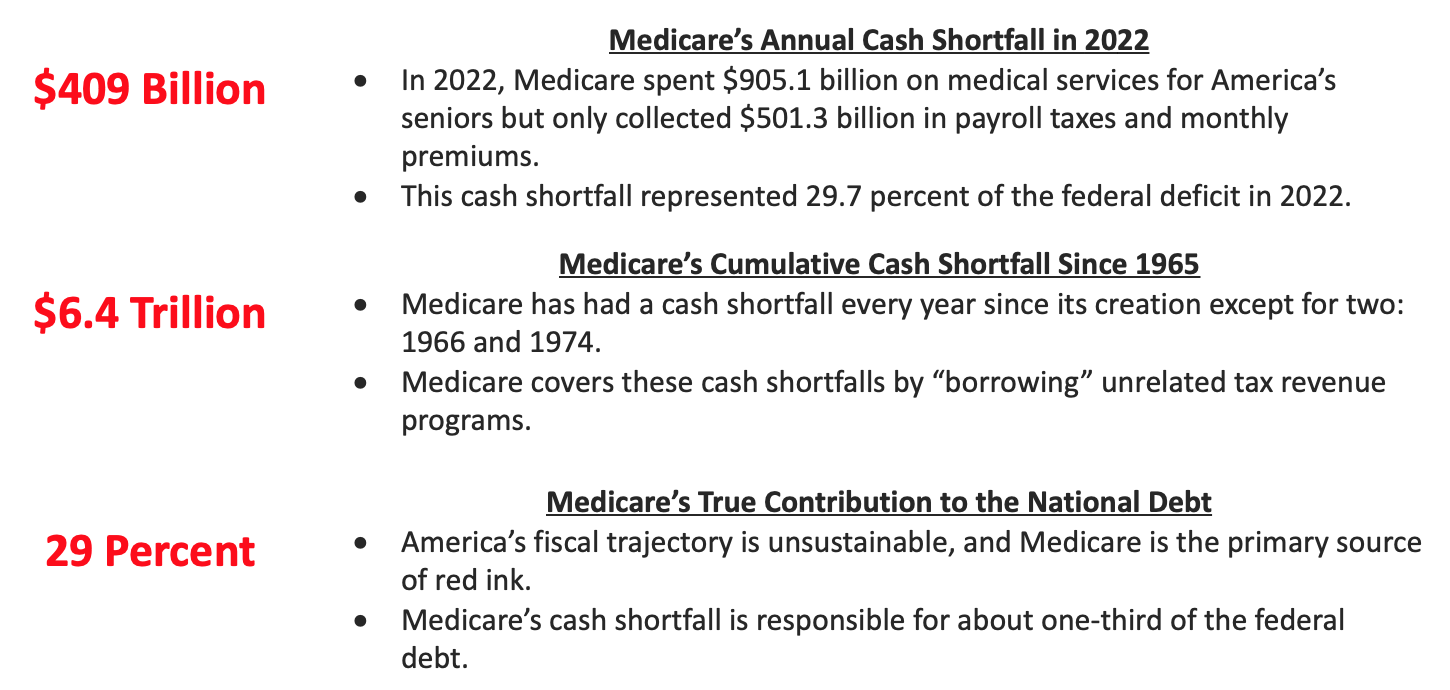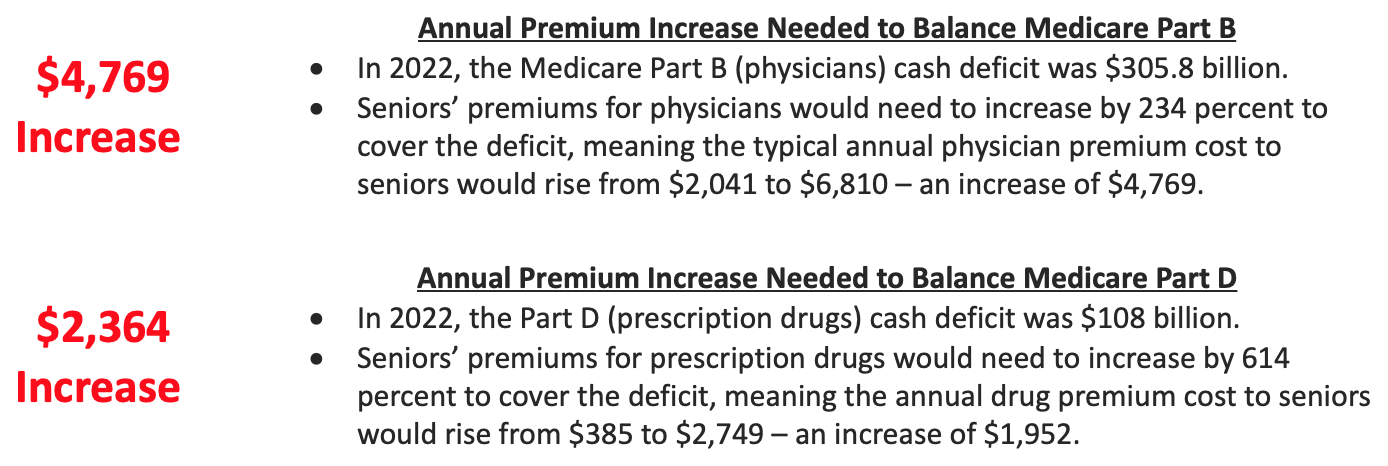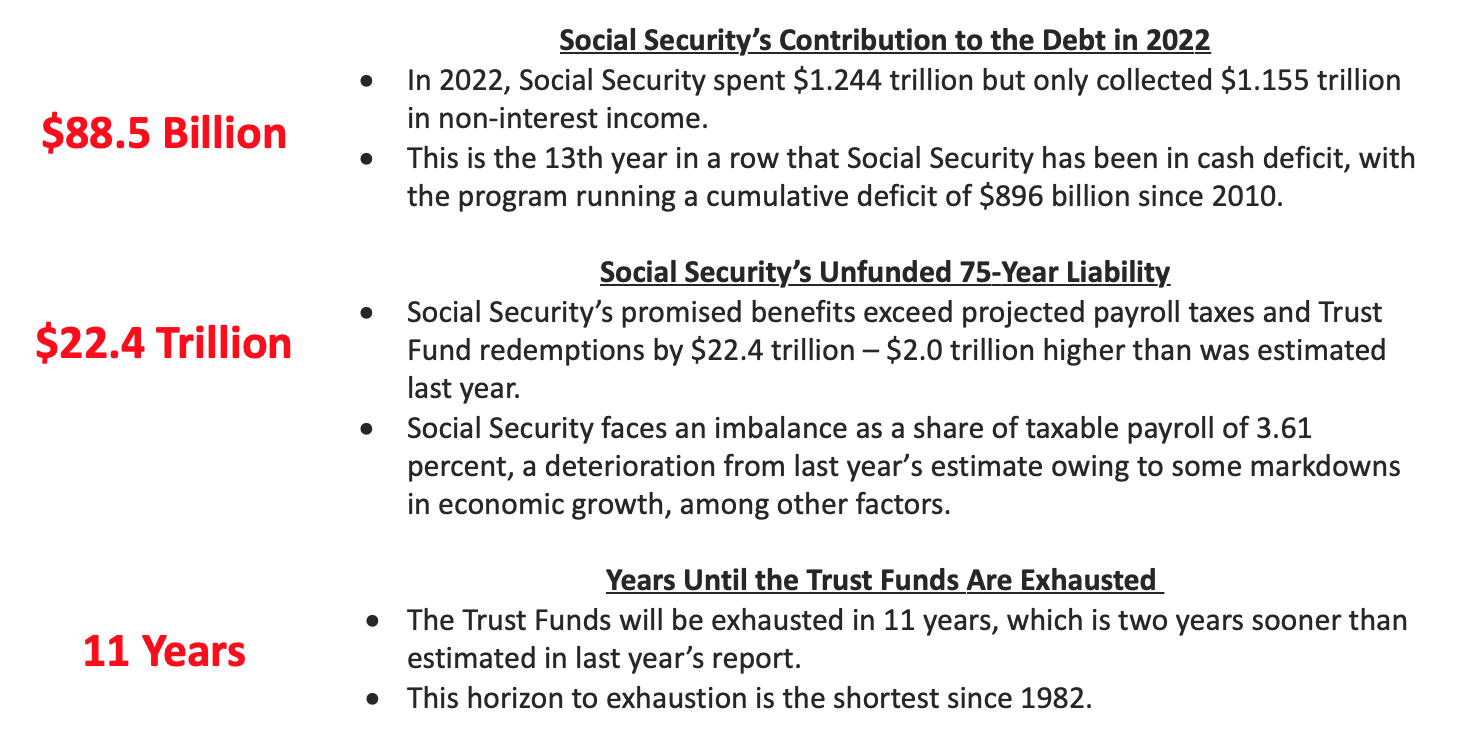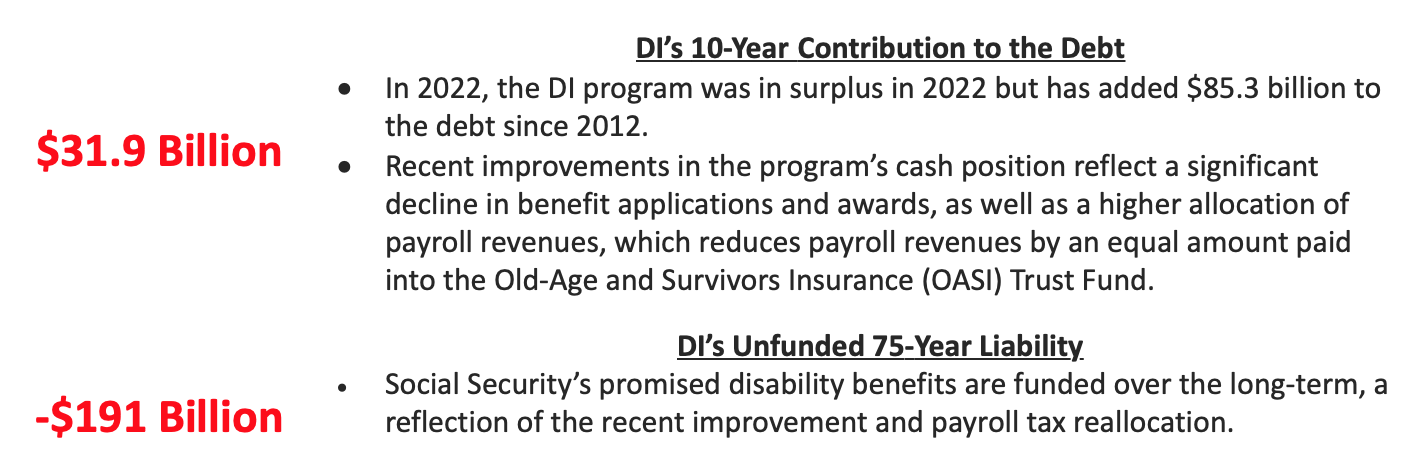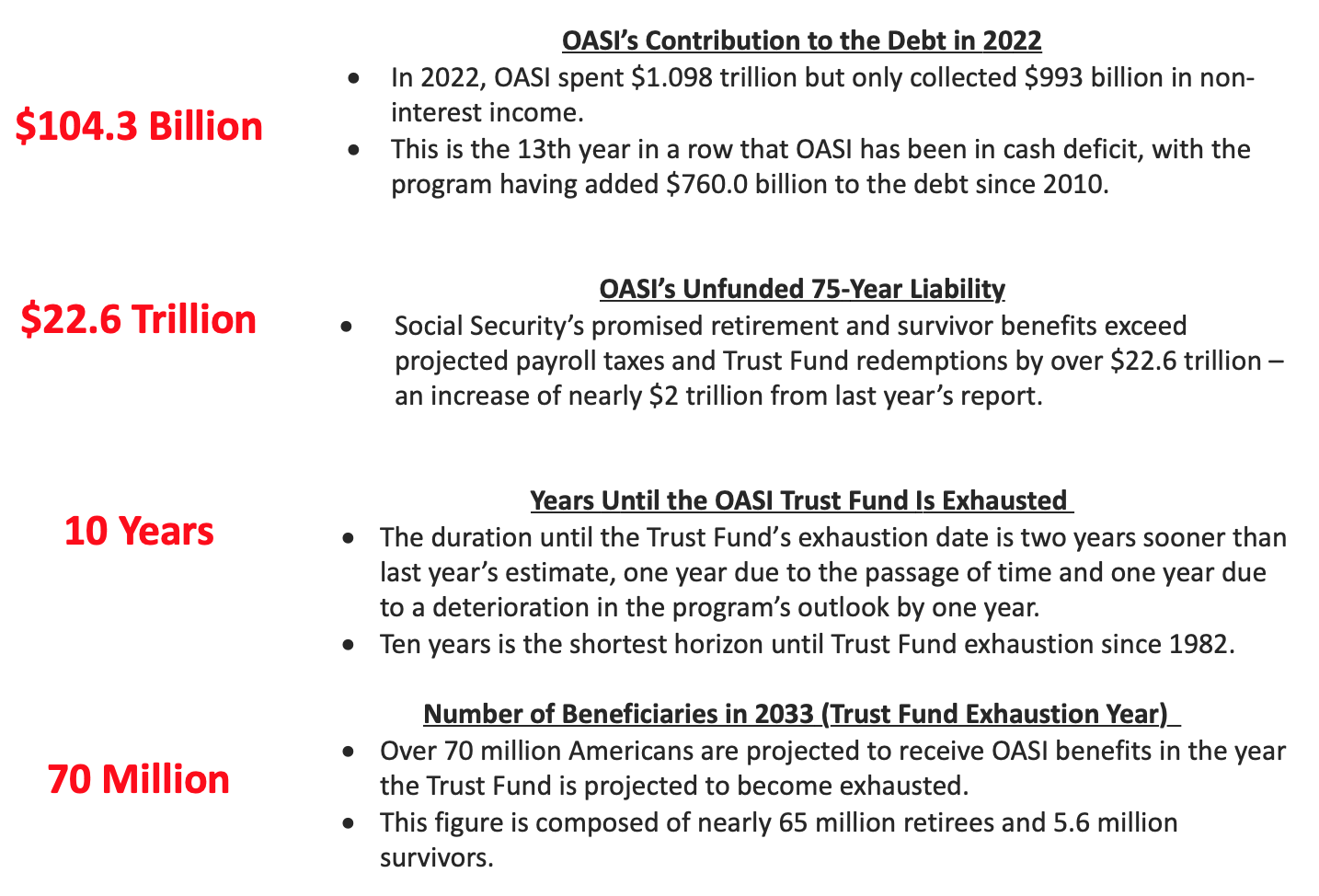Research
March 31, 2023
The Future of America’s Entitlements: What You Need to Know About the Medicare and Social Security Trustees Reports
Executive Summary
Today, the Social Security and Medicare Trustees issued their annual reports, one day shy of the statutory deadline, detailing the financial state of America’s two largest entitlement programs. The reports echo past conclusions: Social Security and Medicare are still facing insolvency.
At its current pace, Medicare will go bankrupt in 2031 and the Social Security Trust Funds for old-aged benefits and disability benefits will become exhausted by 2034.
A quick look at the data proves just how broken our current entitlement programs are. An American Action Forum analysis of the data found other startling statistics, including:
- Medicare’s annual cash shortfall in 2022 was $404 billion;
- Over the next 75 years, Social Security will owe $22.4 trillion more than it is projected to take in.
What You Need to Know About the Medicare and Social Security Trustees Reports includes one-pagers and relevant statistics on:
- The solvency of Medicare;
- The president’s stewardship of Medicare;
- The solvency of the Social Security Trust Fund;
- The solvency of the Social Security Disability Insurance (DI) program; and
- The solvency of the Social Security Old-Age and Survivors Insurance (OASI) program.
The Solvency of Medicare
This week, Treasury Secretary Janet Yellen released the 2023 Medicare Trustees Report. This annual report delivered yet another reminder to the American public that Medicare is undeniably going bankrupt.
The report estimates that the Medicare Hospital Insurance Trust Fund will be bankrupt by 2031. While the bankruptcy projection may snag the headlines, there are three key budgetary numbers that shouldn’t go unnoticed.
Continuing with the Medicare status quo is unsustainable. Balancing Medicare’s annual cash shortfalls under the existing system would prove devastating to seniors and failing to reform the status quo would result in the following impacts:
The Executive Branch’s Stewardship of Medicare
An Evaluation of the Executive Branch’s Medicare Stewardship
Each year, the Trustees Report provides a non-partisan evaluation of the president’s stewardship of Medicare. Prepared annually for Congress by the Office of the Chief Actuary, the Trustees Report offers unparalleled detail on the financial operations and actuarial status of the Medicare program. In short, it’s where every administration’s soaring Medicare rhetoric meets fiscal reality. So far, President Biden has resisted undertaking significant Medicare reform. The 2023 Trustees Report provides a sense of what the future may look like should Medicare continue to remain unchanged, and why sooner or later Medicare reform is inevitable.
MEDICARE FINANCIAL OPERATIONS (Billions)
*2023 Projections
The Obama Administration oversaw a $2.4 trillion cash shortfall over eight years (2009–2016). The Trump Administration oversaw its own $1.6 trillion Medicare cash shortfall. The fiscal reality is that continuing the previous two administration’s Medicare policies and leaving Medicare unchanged all but guarantees bankruptcy. President Biden has already overseen an $813 billion cash shortfall by the halfway mark of his term.
With such unprecedented levels of cash shortfalls continuing through the budget horizon, maintaining the status quo ensures that Medicare will soon not exist for today’s seniors, let alone future generations of Americans. These rising costs and the measures necessary to cover them will increasingly harm seniors if Medicare reform is not undertaken.
The Solvency of the Social Security Trust Fund
This week, the board of trustees that oversees the Social Security program released its annual report. The report shows that the financial outlook for the nation’s primary safety net for retirees, survivors, and the disabled will fail to meet its promises to future seniors in the absence of meaningful reform.
The report estimates that the combined (retirement and disability) Social Security Trust Funds will be exhausted by 2034, one year earlier than last year’s estimate. The Trustees Report makes clear the program’s structural imbalance that puts at risk the retirement benefits of millions of working Americans.
The Trustees Report paints a troubled picture of Social Security’s financial health and demonstrates that the present course is unsustainable. Social Security is now contributing to the annual deficit, while promised benefits exceed planned funding by over $22 trillion. The implications of failing to reform the status quo are:
The Solvency of Social Security Disability Insurance
This week, the board of trustees that oversees the Social Security program released its annual report. The report reflects continued improvement in the outlook for the Disability Insurance (DI) program.
The report estimates that the DI Trust Fund is solvent over the long term. This outlook marks the second time since 1983 the program has been sustainable over the long-term. The program has faced recent solvency challenges, requiring a payroll tax reallocation in 2015.
Solvency of Social Security Old-Age and Survivors Insurance
This week, the board of trustees that oversees the Social Security program released its annual report. The report shows that the Old-age and Survivors Insurance (OASI) program remains unsustainable and will be unable to meet the needs of future beneficiaries absent reform.
The report estimates that the OASI Trust Funds will be exhausted by 2033. The report also makes clear several additional structural challenges that endanger the millions of current and future retirees and survivors who rely on this program.
The Trustees Report makes clear that the primary federal retirement program remains unsustainable. On its present course, the program is on track either to reduce the retirement benefits of over 70 million Americans or to raise taxes significantly on future workers.










